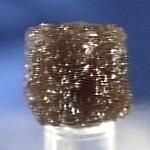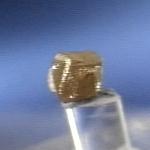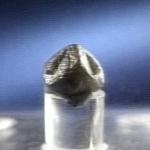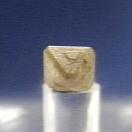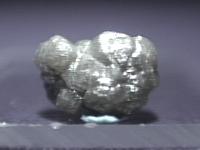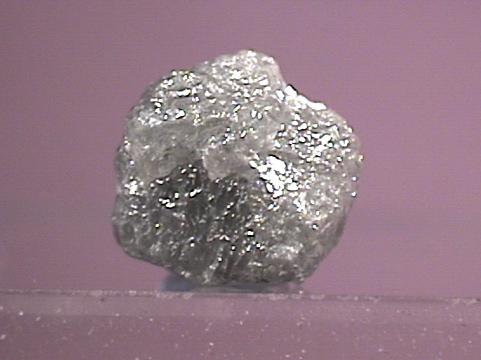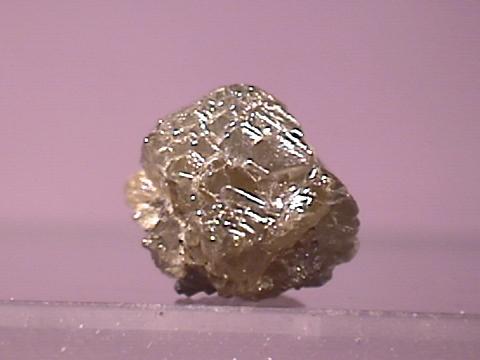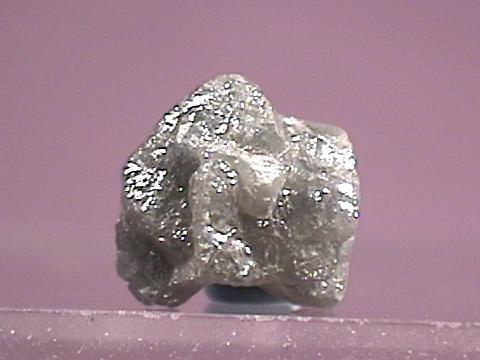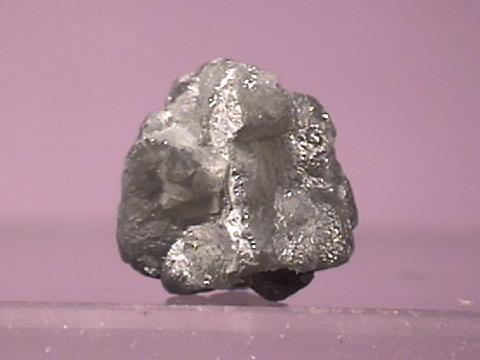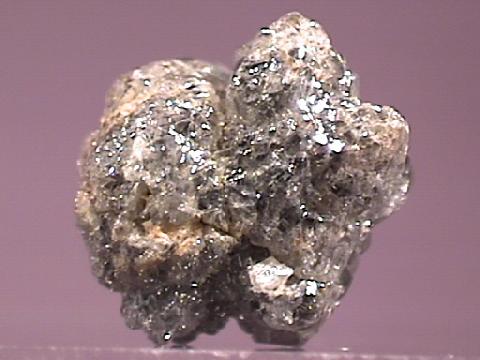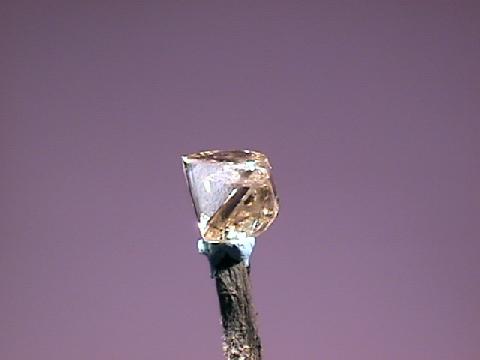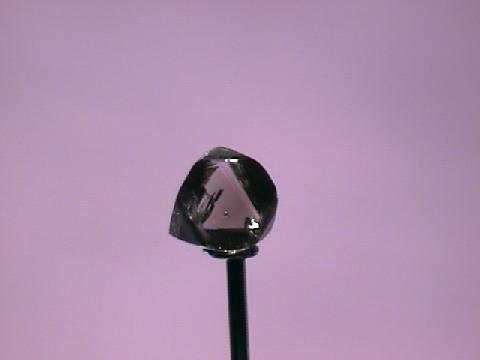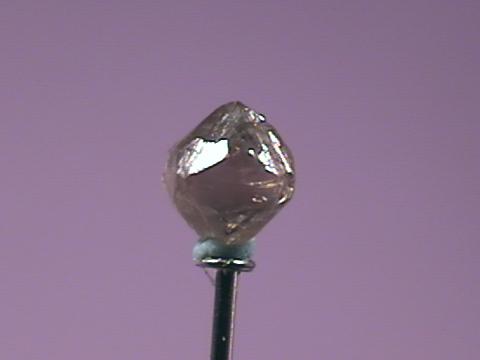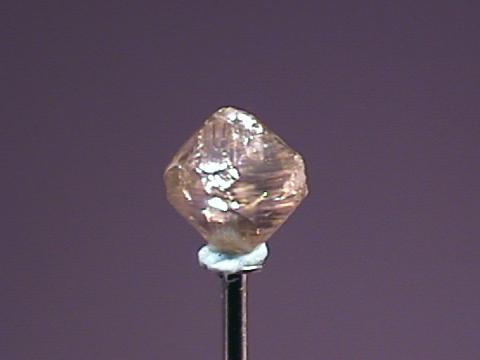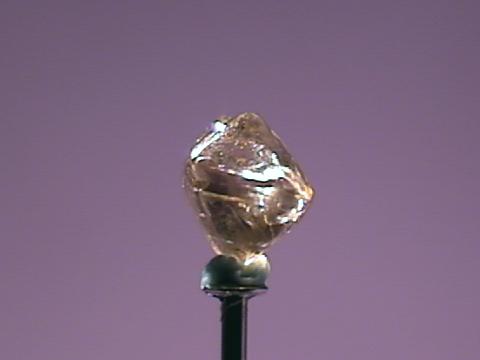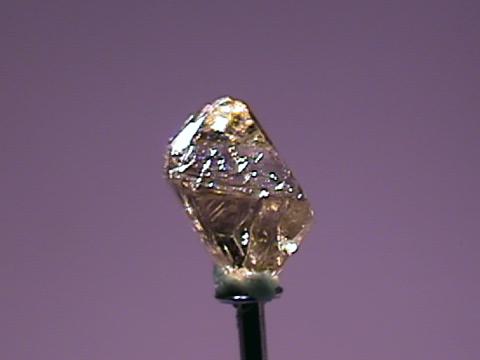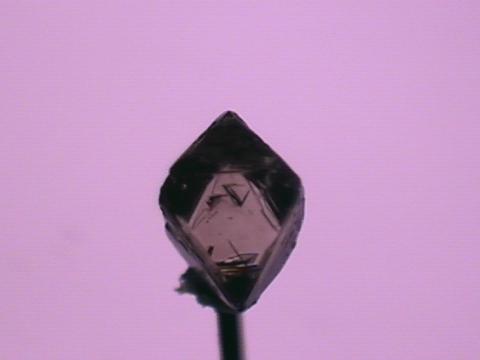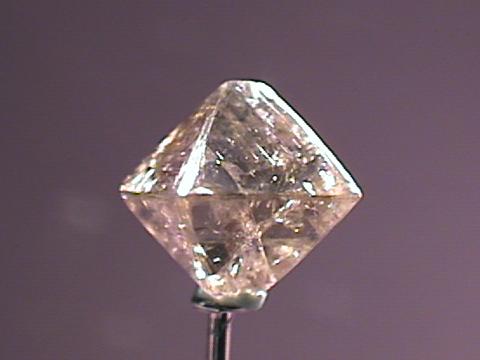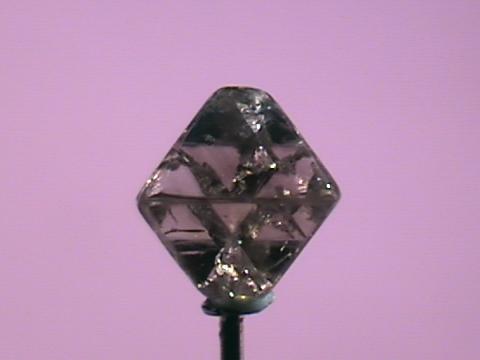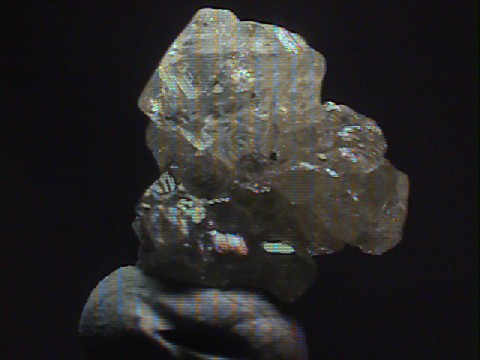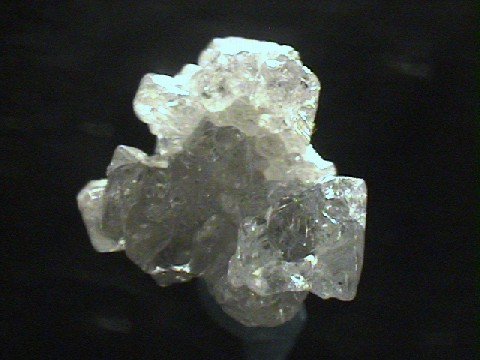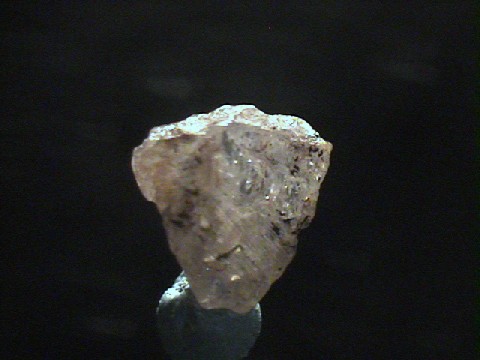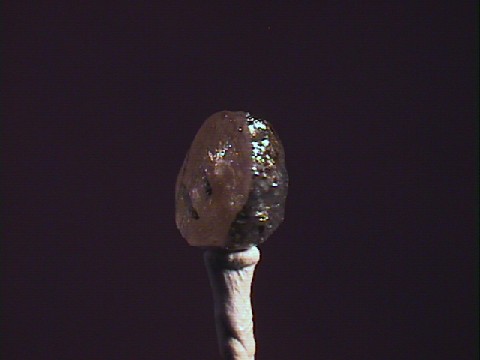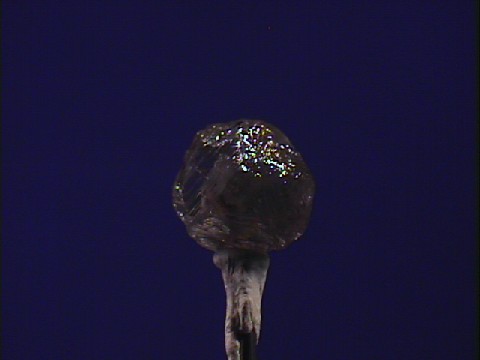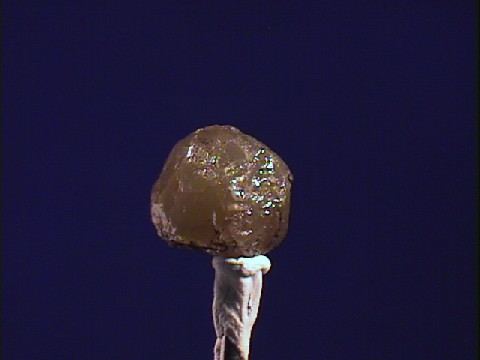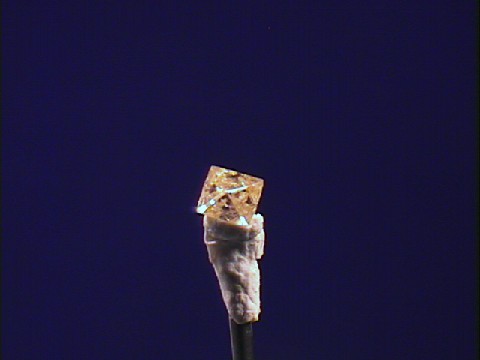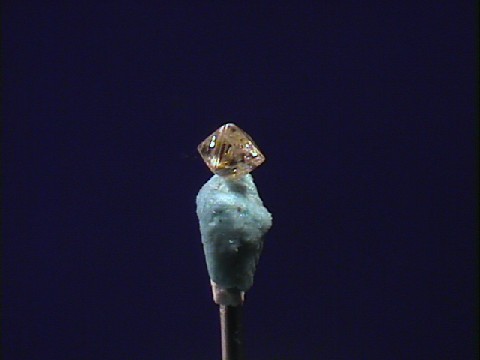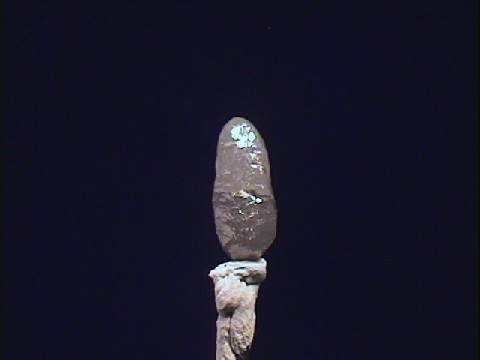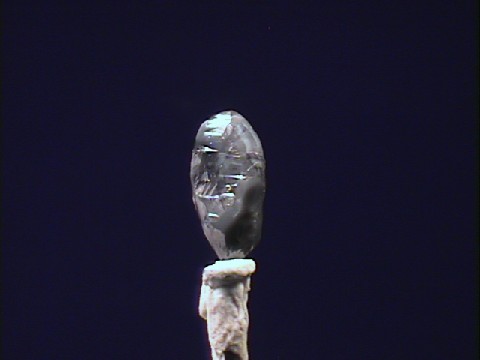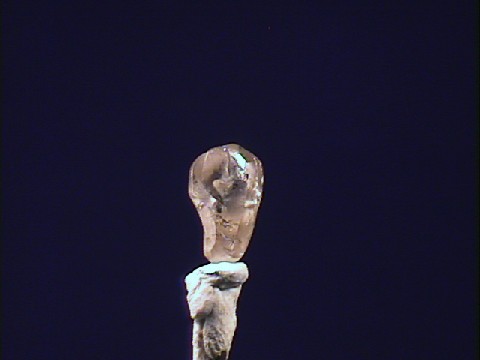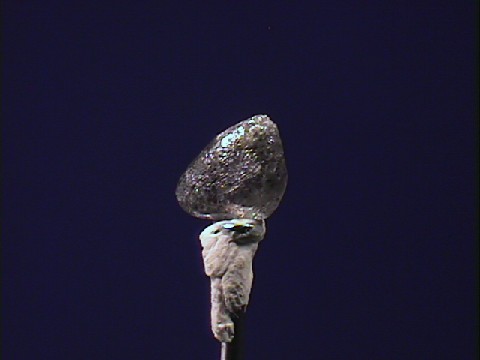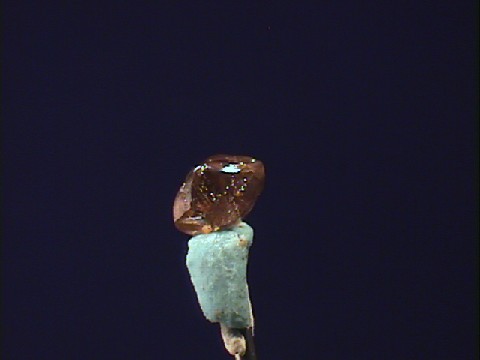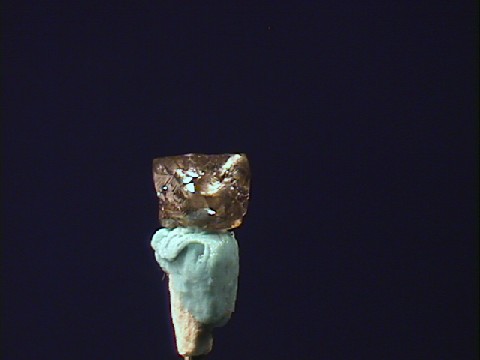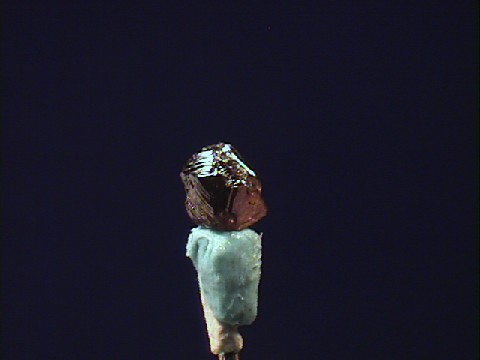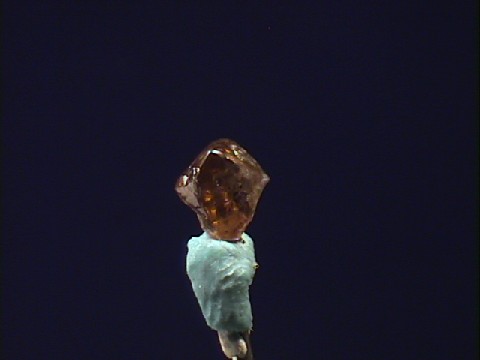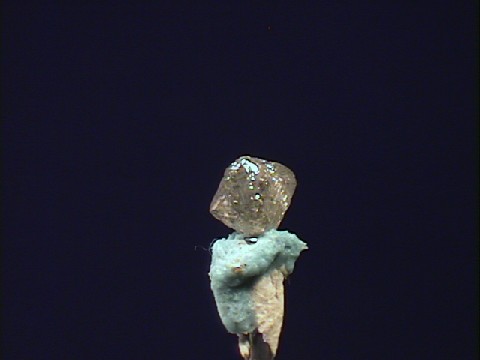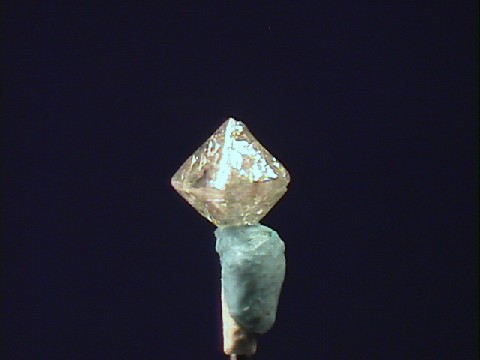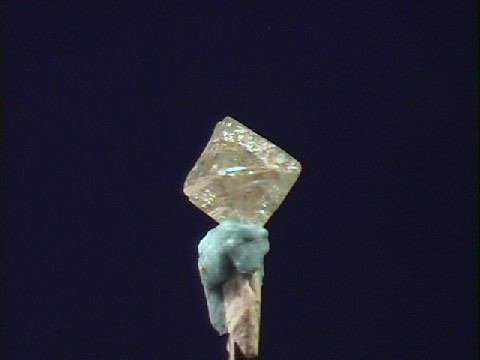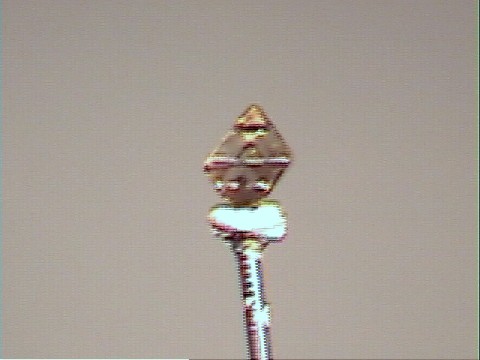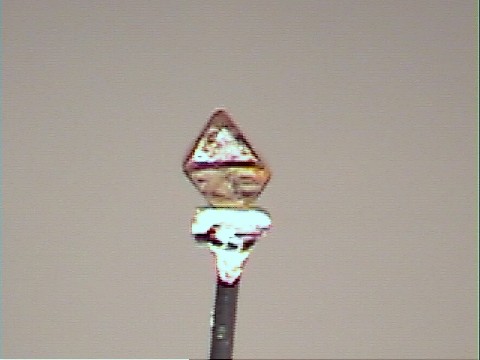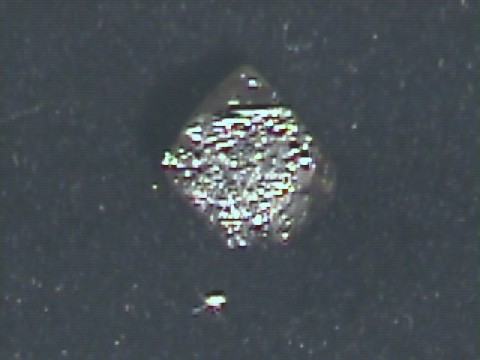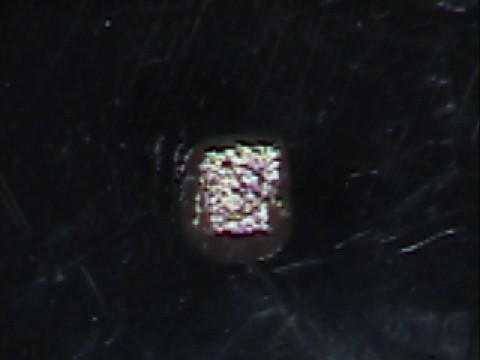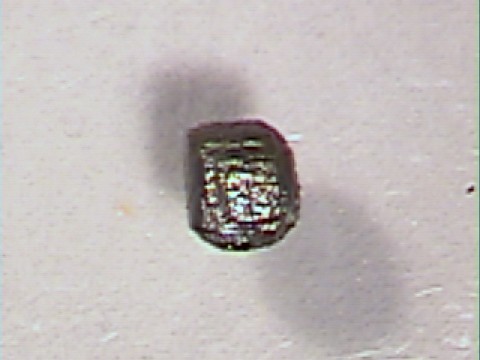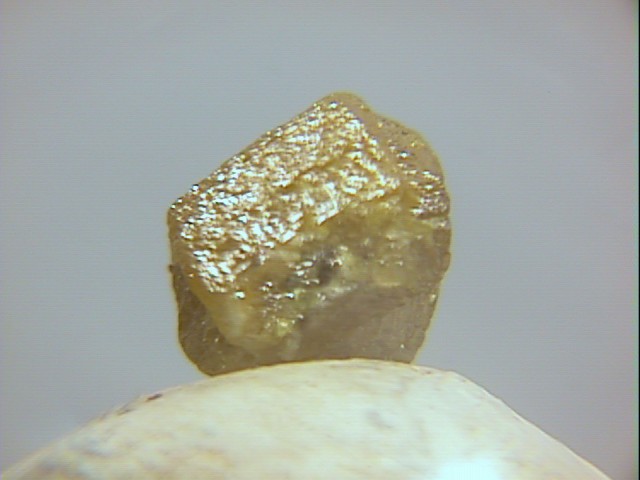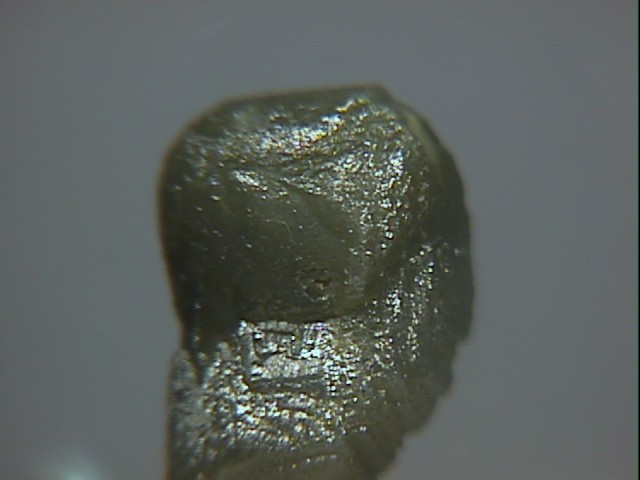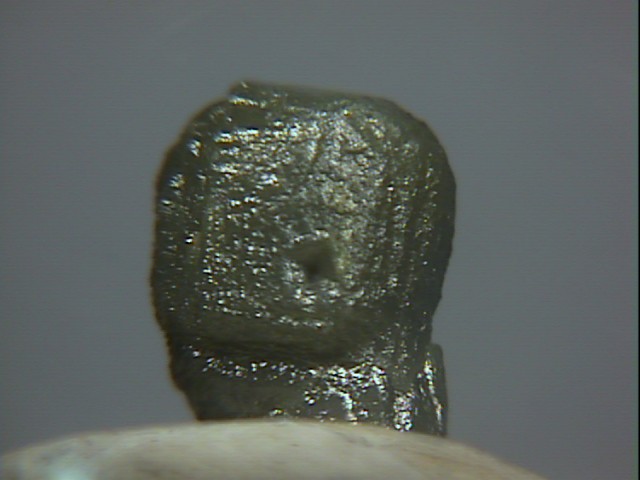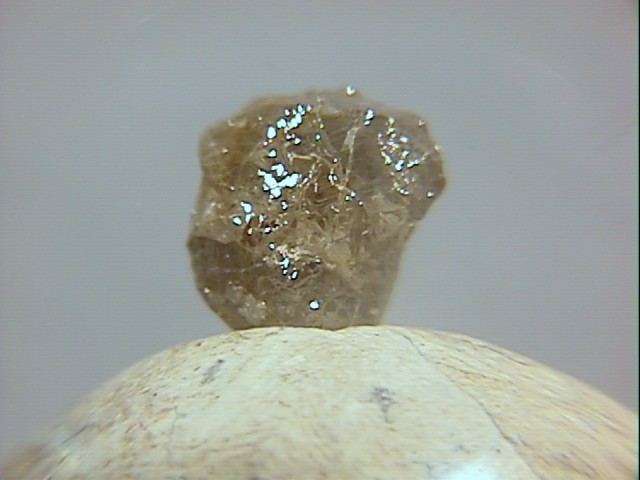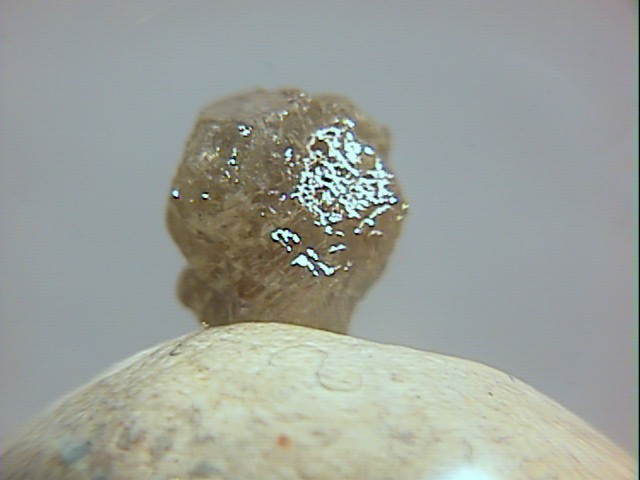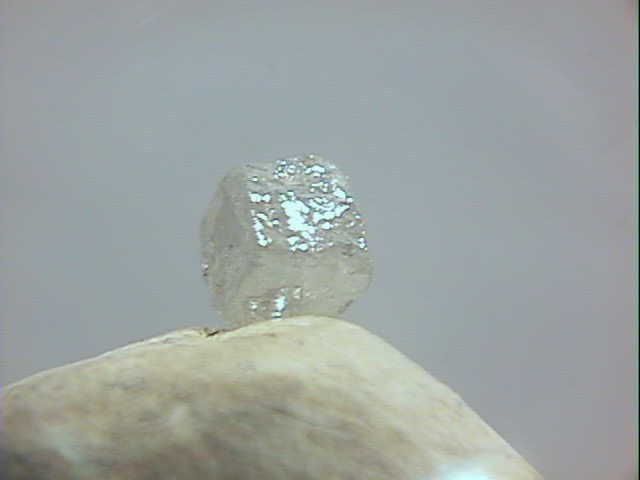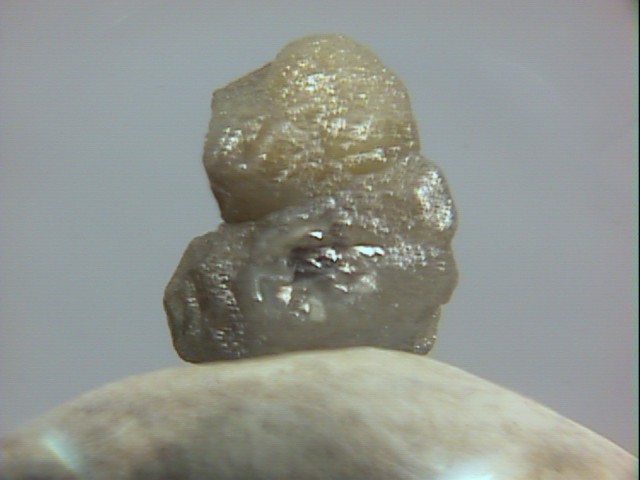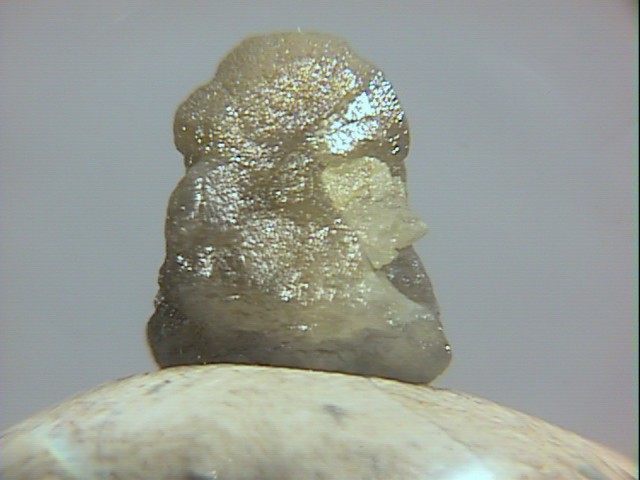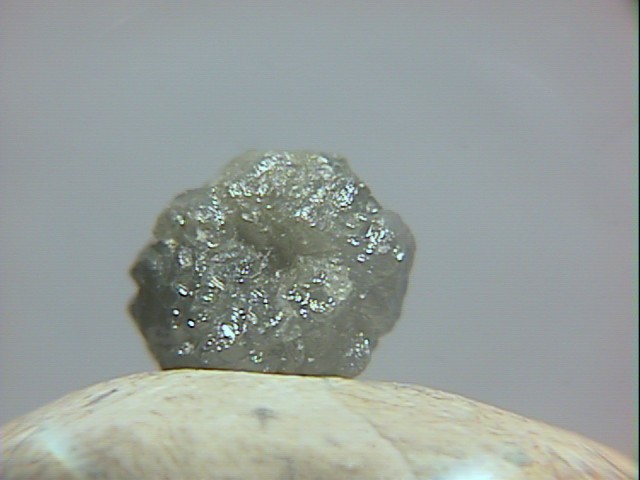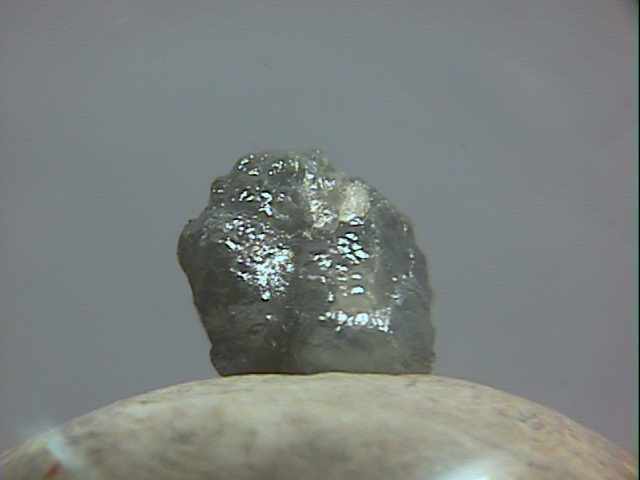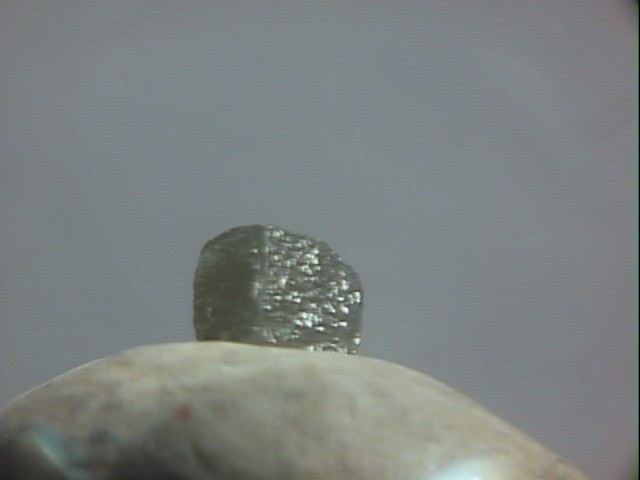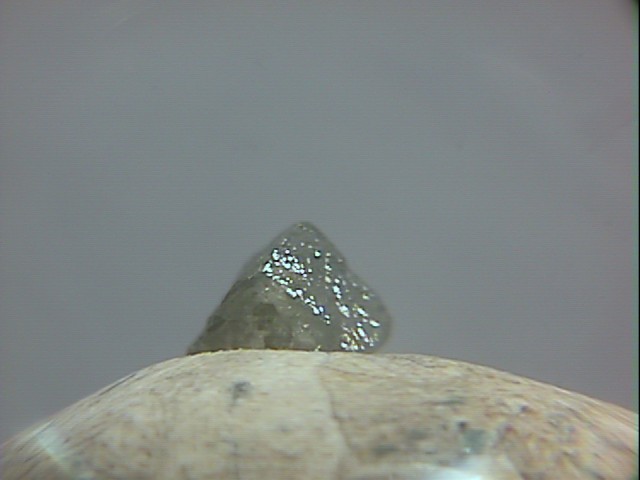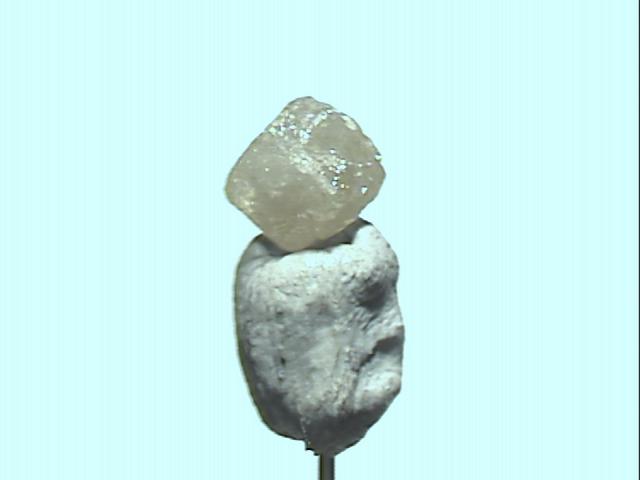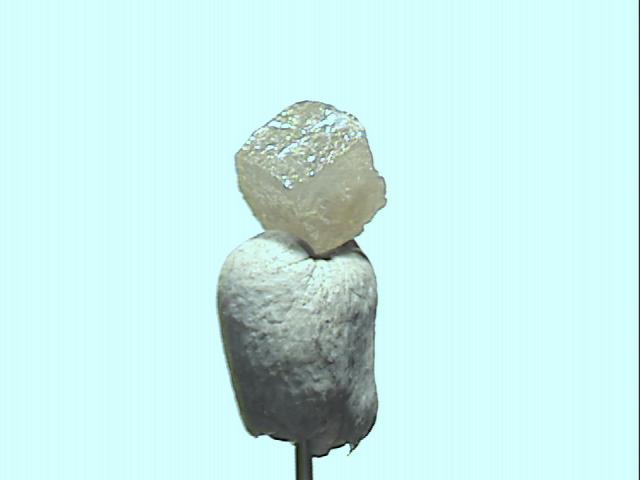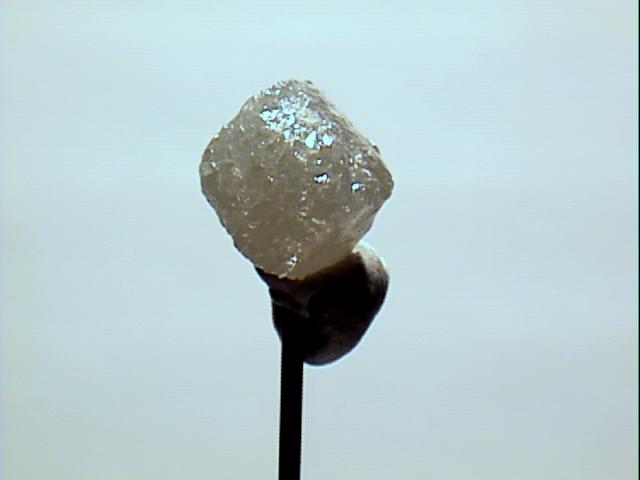|
|
Diamond has long been recognized as the ultimate gemstone, perhaps largely because it is nearly indestructible. See the Diamond Mineral page for other measures of diamond's superior characteristics as a material or mineral. As gemstones, diamonds are typically described in terms of Cut, Clarity, Color, and of course Carat. Cut refers to two related characteristics: the shape of the stone, and the quality by which the shape is rendered. Natural diamond crystals have several common forms (or habits), but the cube and octahedron are the normal pure forms. Early attempts to "improve" these shapes took advantage of the primary weakness of diamond: perfect cleavage. A diamond cutter can strike a sharp blow using a fine chisel along one of these directions, and the stone may cleave along the cleavage plane. Note that a mis-strike to a perfect crystal is likely to result in no damage at all, or in a cleavage at a different location than intended. Also, natural crystals tend to have flaws which result in weak areas, even hidden internal fractures, and at times a diamond cutter will shatter a stone into several, dozens, or hundreds of pieces. The second way to shape a diamond is to grind the stone. Not any grit will do, however. Since diamond is by far the hardest natural substance, it cannot be abraded by anything else. Luckily, diamond is not equally hard in all directions, and a diamond powder or grit will contain crystals of every orientation, and by turning a stone to a relatively weak orientation, the stone may be ground or polished by that portion of the grit that happens to have a harder orientation. The third (and modern) way to shape a diamond is by sawing it. Of course, a diamond saw blade is required, and very thin diamond-filled blades are available (as thin as four one-thousandths of an inch, or 0.004"), allowing a cut to be made through a diamond with very little wasted material. A diamond is rough-cut in this way, resulting in a shape near the final target, and then the final surfaces and facets are polished into the stone with a special lapidary grinder using fine diamond powder as the abrasive. There are many possible shapes of a gemstone (round, princess or square, rectangular, oval, heart, diamond, teardrop, etc.), and there are numerous variants of each to optimize the fire or clarity (brilliance) of a stone. A shape is chosen based upon the presence of flaws to be hidden or eliminated, the rough stone's shape (to minimize waste), or simply to maximize the price the jeweler hopes to receive. Only one shape has a proven mathematical precision to optimize the diamond's appearance: the round brilliant cut. In 1919, the mathematician and gem enthusiast Marcel Tolkowsky calculated the ideal shape to maximize the light reflected when a diamond is viewed from above. The resulting shape is round, has 57 facets (polished faces), including 33 on the crown (the top half) and 24 on the pavilion (the lower half), and carefully designed proportions. Any deviation from the ideal proportions reduces the amount of light reflected, and thus the brilliance of the stone. The clarity of a diamond is determined by the presence of impurities (which might cloud the crystal), internal fractures, inclusions (such as veils or specs of other minerals), polish, and cleanliness. The last of these is simple to fix: a thorough and careful cleaning to remove fingerprints, oils, smudges and other surface blemished can do wonders to improve the appearance of a diamond. Polish should be a simple matter as well, although it can only be done to an unmounted stone and with precision equipment. The key is that the surface of each facet should be flat to a fraction of a wavelength of light, without significant pits or scratches. Otherwise, light will escape rather than being reflected. Inclusions are the buyer's friend, as they help prove the diamond is genuine. However, they also should be effectively invisible, by virtue of placement and small size. Tiny black carbon specs or other unidentified minerals are the most common inclusions, but others are found, often reflecting the boundary between multiple crystals that grew together into a single stone. Sometimes milky veils are seen. Note that some types of inclusions, such as round bubbles or linear tracks are a sure sign of an artificial stone, not a diamond. Diamonds come in every color of the rainbow plus some. The most common colors are shades of yellow to brown, and the stronger these colors are, the less desirable the stone. Pale brown diamonds with good clarity are described as having a champagne color, more intense ones as having a cognac color, and these can be both pretty and inexpensive. The darkest brown stones are effectively black and opaque, and there is also a market for these black diamonds. Strongly colored diamonds (other than shades of brown) are much more valuable, per carat, than colorless ones of similar size and clarity. They are called fancy diamonds, and examples include canary yellow, blue, green, and red diamonds. Famous examples include the gray-blue Hope Diamond, the pale pink Darya-I-Nur Diamond, the pale blue-green Great Mogul (re-cut and likely the same stone known today as the Orlov, which resides in the collection of the Kremlin State Museum), the yellow diamond named Eureka (reportedly the first diamond discovered in South Africa, which sparked an industry), and the canary-yellow Tiffany Diamond. Indeed, the quality of the color of a fancy diamond is much more important than the carat weight in determining its value. Well-colored diamonds are rare, and rarity drives price. There are many collectors of diamonds, and each of them tends to view their fancy colored diamonds as irreplaceable. Note that the cut and shape of a fancy diamond may be optimized to show the most intense color, which will generally not be a brilliant cut (which maximizes total reflected light). Rather, more internal reflections (resulting in a longer path length) will increase the depth of color. A properly cut fancy diamond will exhibit a much more intense color than the rough diamond from which it was cut. Note that the extreme high value of fancy diamonds is limited to natural stones, with proven, documented color source. Ordinary colorless diamonds (and the more common pale yellow-brown ones) can be treated to produce diamonds with vivid colors. Modern treatments result in colors that are permanent and beautiful, but still do not command the price of rare natural fancy diamonds. However, some color treatments effect the surface only and these should be avoided as they may not be permanent. Simple heating may produce a black diamond from a lower quality brown one. A carat is one-fifth of a gram (or 200 milligrams). Diamonds weighing less than a carat are often measured in points, or hundredths of a carat (100 points equals 1 carat). The carat weight is an important factor in the value of a diamond, as larger diamonds are much more rare than small ones, and so a larger diamond is more valuable per carat than a smaller one. Indeed, small, relatively inexpensive diamonds are often used as accent stones around a larger stone in a piece of jewelry which is then described by its TCW or Total Carat Weight instead of the weight of the largest stone which generally drives the cost of the piece. The relationship between carat weight and price-per-carat is not linear, as market demand creates a desire (and thus a jump in prices) for whole carat multiples. Thus a stone just over 1 carat commands a significant higher price-per-carat than a stone just under 1 carat. This factor is especially noticeable at smaller unit weights such as 1, 2, 3, 4, and 5 carats, then again at 10 carats. This integer-weight factor has an undesirable side effect: a diamond cutter knows the value is affected this way, and may be tempted to cut a stone in a non-optimal manner in order to keep the final weight above the benchmark to earn that boost in price. For example, the girdle (widest part) may be too thick or the pavilion (the lower half) may be cut too steep, both of which result in a significant reduction in the stone's brilliance. As a result, a 0.95 carat diamond may appear superior to a 1.05 carat diamond (thanks to an inferior cut) yet still be priced significantly less. The Cullinan diamond is the largest rough gem-quality diamond ever found, at 3,106.75 carats (621.35 g or 1.3698 pounds). It was found in the Premier Mine near Gauteng, South Africa, on January 25, 1905. Nine large gems were cut from this stone, the largest of which, the Cullinan I or Great Star of Africa, weighs 530 carats. A still larger gemstone was produced (from the same mine) in 1985, the Golden Jubilee Diamond, at 545.67 carats (109.13 g), and is currently the record holder for the largest cut diamond in the world. When valuing a diamond purchase, all of the factors of Cut, Clarity, Color, and of course Carat weight are important. No one factor dominates, although an impressive high weight or fancy color can push the stone beyond the bounds of relative price. A proper appraisal, available from any reputable jeweler, and in the case of a colored diamond, documentation of its provenance, will provide proof of the diamond's value. |
 DIAMOND:
The Ultimate Gemstone
DIAMOND:
The Ultimate Gemstone


